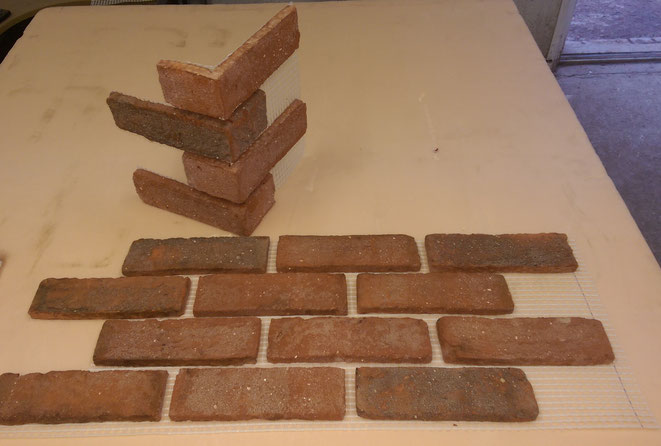Redesigning your walls does not always have to cost you a fortune. Even with affordable solutions like brick slips and brick tiles, you can still have a lot of choices in terms of designs, textures, and overall aesthetic quality.
Before you avail of the service of brickwork contractors, however, you first need to know which brick wall you should have. To do this, you have to see the difference between brick slips and brick tiles. This is what we’re going to help you with in the next sections.
What are Brick Slips?
Brick slips are thin cuts from bricks. In the construction industry, this is known as SL1.1.
This brick type is specifically designed to allow home and building owners to build a brick-like environment without using actual big and original bricks. This can come in various designs, colors, and textures to ensure flexible choices that will go with your shrubs as well.
Usually, this is used when one wants to have a brick finish, but the infrastructure’s design can’t handle heavy bricks in the process. As brick slips are thinner and more lightweight, it becomes an ideal choice if the only goal lies in aesthetics.
Pros and Cons of Brick Slips
Brick slips share a number of pros and cons.
First, here are the pros:
- Offers an exposed brick finish
- More lightweight compared to regular bricks
- Long-lasting due to its fired clay structure
The cons, on the other hand, include:
- Finished look can be rough-looking
- More expensive than regular bricks
The brick type’s pros mostly revolve around its structure. The fact that it’s cut from bricks opens a whole lot of new benefits compared to simply using actual bricks.
Note, though, that if you’re on a budget, this may not be the ideal choice around. Of course, you can always look for brick slip installers that offer cost-efficient services if you’re really dedicated to getting this.
What are Brick Tiles?
Unlike brick slips, brick tiles are not cut from bricks. Instead, this directly comes from brick manufacturing processes. You can consider this as a minimal version of regular bricks.
Even so, this brick effect’s offers are the same as a brick slip’s. This serves as an alternative for actual bricks in terms of aesthetic finishes and qualities. The options in terms of the available designs and textures can also go and on.
This is better if you’re looking for a thicker and heavier brick structure for your project. This also assures better mimicking of an actual brick.
Pros and Cons of Brick Tiles
For this section, we’re going to focus on the pros and cons of brick tiles.
For the pros:
- More affordable than regular bricks and brick slips
- Has a more similar look with actual bricks
- Highly durable
On the flip side, below are the cons:
- Requires additional protection from stains
- Has a rusty-like finish
Brick tiles will be the better choice between the two if you want a more affordable brick finish. With the same aesthetic quality, you will be able to maintain this with little to no costs.
The actual installation for this, though, maybe pricier than brick slips.
Summary
It’s easy to confuse brick slips with brick tiles. They have very similar purposes, qualities, and even pros and cons at one point. Bottom-line, they are the same. They only differed in terms of their structure.
Simply said, brick slips are made from cutting thin strips of bricks, while brick tiles come from the original process of manufacturing bricks. Both, however, offer a vast range of aesthetic designs which includes ivy plant trees or even palm trees. Hence, your choice will solely depend on your preference. You can also ask professionals for a more accurate recommendation.

